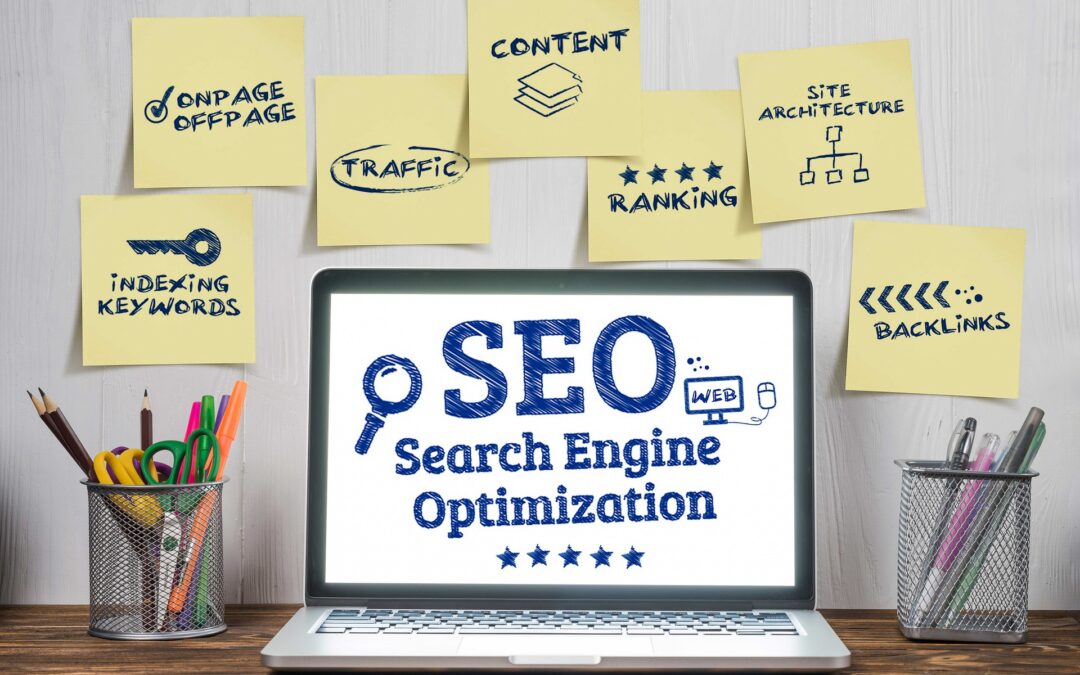Having well-optimized SEO is crucial for today’s current business. Without it, it’s almost as if you don’t exist in the eyes of the consumer. Search Engine Optimization (SEO), in simple words, is composed of sets of best practices that are designed to help improve your blog’s positioning and credibility in organic and inorganic search results through the internet. It’s about driving up the quality and quantity of people driven to your website.
Studies show that over 54% of traffic for websites is organic. SEO involves many different tactics and techniques. As a website owner, you cannot afford to not optimize your organic reach so we created this article for you, to give you the best on-page SEO practices to drive up traffic and potential sales to your website.
But before we start, let’s make it very clear to you what are the two types of SEO; on-page and off-page SEO is:
- On-page SEO: keywords written in your content
- Off-page SEO: Title, Tags, Links, Description, etc
Best SEO Practices
Keyword Optimization
At the core of any SEO strategy is keyword optimization. Keyword optimization is simply a selection of the right sets of keywords a.k.a. words that people in your market use. Each keyword has thousands of monthly searches. If you were a bakery, people in your market would most likely use ‘flour’, ‘wheat’, ‘yeast’, ‘butter’, and so on as their “keywords.” This core SEO fundamental will either be done by you or your marketing expert.
- Pro Tip: when it comes to your keyword research, please include Latent Semantic Indexing (LSI) and relevant keywords. Remember, Google’s smart. It will recognize other relevant information pertaining to your content. If this is clear to you, we can process the very first strategy.
SEO Best Practice #1 – Your Keywords Appear Within the First 150 words
This is an oldie but even after all these years, it’s still relevant. Google and its crawlers still index your content based on your main keyword that appears within the first 150 words.
- Pro Tip: Ideally, make your main keyword part of your H1 tag or your article’s mini title.
SEO Best Practice #2 – Keep Your Keyword Density Under 3%
There are debates among marketers about this whether this is true or not, some claim higher densities of 10% are still effective while some say “stay below 2%” – whatever the case might be, we have found that we get a bit more exposure if we keep the frequency of a keyword under 3% (that’s about 24-27x usage per keyword).
- Pro Tip: include your main keyword in your URL. It’s an underrated technique but it is effective.
SEO Best Practice #3 – Interlinking
Very similar to the idea of building backlinks, interlinking is simply linking to other articles within your website. Imagine a web, it has a lot of connections but it’s all contained within 1 giant web and that’s basically interlinking. Link to other relevant articles found on your website.
- Pro Tip: externally linking to other authority websites, that are relevant to your topic, has shown improvement in searchability.
SEO Best Practice #4 – Use Headings
Headings don’t just make your content more organized and cleaner but they actually help spiders to index your website’s content much, much better. Remember, essentially the job of a spider crawler is to paste your content on their list of qualifiers. The more qualifies you to have, the more your content will appear higher on their search results.
- Pro Tip: throughout your article, there will be images, right? Within those images are what are called “alternative text” or text that appears when the image doesn’t appear. Name these correctly, and you will see a boost in your searchability.
SEO Best Practice #5 – Mobile-Friendly
This is the era of smartphones. Practically every single person in the whole entire world has a smartphone. You and I have never been so connected. The demand for mobile-optimized websites has never been higher, which includes tablets and ultrabooks as well. It is very important that you lay out your content’s structure correctly, especially for all your CTA buttons. You want those buttons to be nice and big, isolated, with no distractions.
- Pro Tip: fix your page’s loading speed. A slow loading speed can literally cost you hundreds if not thousands of potential visitors. Remember, people are not as attentive as before. Most people’s attention span is less than 3 seconds. If your website loads longer than that, they might just check off.
The Best SEO Advice I Can Give You
I know this is more on-page SEO but I cannot stress just how important it is for you to also use off-page SEO and not merely rely on on-page SEO. It’s half and half, without the other half, your SEO strategy however incredible it is. . . will always be missing out on half of the opportunities available.
Effective Off-Page SEO Strategies:
- Guest Blogging
- Social Shares
- Referral Traffic
- Influencer Outreach
- Social Media Engagement
- Social Bookmarking Sites
- Forum Submission
- Q&A Sites
- Blog Directory Submission
- Video Content
- Google My Business
- .. and so much more.
You must never underestimate how demanding Google’s or Yahoo’s search algorithm is. Their algorithm constantly changes, as they become more efficient. You must become much more detailed. In this ever-changing world, you must keep up or you will get left behind.

